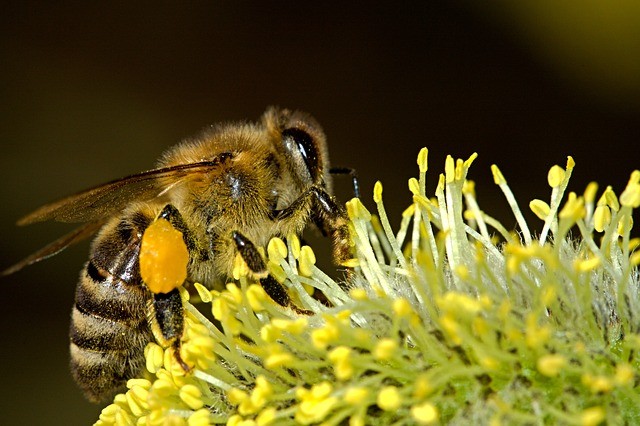The natural remedies for bee sting. Check out the article we found over at everyday roots.
When people find out I am a beekeeper, one of the first questions is inevitably “do you get stung a lot?” To which I can merely shrug and say “meh.” The truth is the more you work around bees and the more comfortable you get, the less stings you’ll receive-but you’ll always get some. Honey bees are quite gentle, and to sting is a suicide mission for them, so it’s not taken lightly. Some days your bees are crabby and you’ll get a couple of stings, but most days they are fine with letting you rip the roof off their home, expose their precious brood, and handle the frames holding their priceless pollen, nectar and honey.
After enough stings, many beekeepers build up a tolerance to the venom, and while it still hurts, there’s a lot less of a reaction in the way of swelling, heat, and itchiness.
Bee venom, or apitoxin, is a colorless liquid composed primarily of proteins. It’s these proteins that cause the local inflammation and associated discomfort with a sting. A honey bee can inject roughly 0.1 mg venom, and most adults-barring those with allergic reactions-can safely withstand 10 stings per pound of body weight.
I’ll have people say “I got stung once-I am terribly allergic, it got all swollen!” That’s actually not an allergic reaction-it’s a normal, localized one. Anaphylactic shock, or a systematic reaction, (which are quite rare) are the only true allergic reaction there is. So don’t panic. But having worked with bees for a while, and been stung, I have a few solid go to home remedies for bee stings to help ease the discomfort.
1. Lavender Essential Oil
This is one of the only times I will recommend using an essential oil “neat”, or undiluted. When taking my course on aromatherapy, it was one of the rare exceptions that my instructor used as well. Lavender essential oil is incredibly soothing, and it can ease discomfort, greatly reduce that infuriating itching, and help with swelling. If you aren’t comfortable using the oil neat, feel free to dilute it-it will still help. You should make sure beforehand that you don’t get irritated by the essential oil, as the last thing you want is to make the sting even more uncomfortable.
You will need…
-1 drop of lavender essential oil
-a small amount of liquid neutral oil (if diluting.)Directions
Apply one drop of lavender essential oil directly on the sting. Make sure the stinger is completely out before doing so. You can also dilute it 50/50 with a liquid neutral oil. Do this twice the first day, and one time the next day.
2. Mud
For those times when you’re caught completely unprepared, mud will work just fine to help with the initial pain that comes with a sting.
You will need…
-Some dirt (or mud if it’s nearby)
-WaterDirections
Add enough water to dry dirt to make a thick but easily applicable mud. Cover the sting completely. When you get home, rinse clean and pay dry.
Read full article: 5 Effective Home Remedies for Bee Stings







Jamie Simmons
Jul 22. 2015
Beautiful creatures.